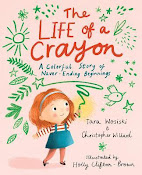Oops, I missed this day. We have done seal displays in the library before, but it must have never been as a celebration of this day, but rather just as a popular topic with children. I have become fascinated by seals since I saw two a couple of weeks ago swimming in Sydney Harbour. They were very entertaining, really playing up to the bystanders filming them on their phones.
A seal is a type of animal called a pinniped, which is Latin for “fin-footed.” Other pinnipeds include the walrus and sea lion. What makes seals different from other pinnipeds is that they don’t really use their flippers to walk. When on land, they usually slide around on their bellies. In the water, their flippers help them swim really fast. Seals are also much quieter and smaller than their sea lion and walrus cousins.
This helped me to know the difference between seals and sea lions, who have their own days of celebration. World Sea Lion Day is 30th May and World Walrus Day is on 24th November.
Five seal stories to recommend:
Seal Surfer by Michael Foreman
A boy and his grandfather watch as a baby seal is born on the rocks near their home and from that day a special friendship is created between them.
It's a warm summer's day, so Boy and his grandad pack up their provisions and head for the seaside. There's so much to do, from exploring rock pools to building a magnificent sandcastle. But their day takes a different turn when they go for a swim and find a baby seal caught up in a net. Its rescue leads Boy and Grandad on a thrilling underwater adventure!
Saving Seal by Diane Jackson Hill and Craig Smith
Seal has made his home in the waters of a coastal village, but he often finds himself trapped and ensnared in the plastic rubbish filling the Bay. Fortunately, he is rescued by Lizzie and Grandpa Dave.
Sydney the Seal Saves the Sea by Andrea Reitmeyer
When Sydney meets a new buddy, they decide to embark on an adventure, exploring the ocean. During their journey, the two friends discover that their beautiful home is covered in litter. The two companions seek help from nearby humans, who vow to help keep the ocean clean for Sydney's animal family.Based on a true story about an elephant seal - an animal that normally prefers the wilds of the Southern Ocean - who defied the odds and gained fame when she persisted in returning to Christchurch's Avon River, time and again, to make herself at home on the banks of the river and to bask in the sun in the middle of busy roads.
While these might be my picks, you will find more on my Pinterest.






















































